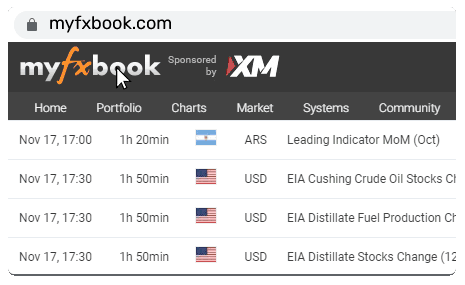- Domů
- Komunita
- Zkušení obchodníci
- Market Fundamental Context
Market Fundamental Context
Markets had a wild ride overnight after the Fed’s 25bps rate cut and updated forecasts. The Dollar first tanked when officials penciled in two more cuts this year—but then snapped back higher as traders realized the overall tone wasn’t as dovish as expected. That bounce in the greenback dragged Wall Street and Gold off record highs, while 10-year yields recovered after briefly dipping under 4%.
For now, the Dollar’s rebound suggests the worst of the selling pressure might be behind us, but it’s still too early to call a proper trend shift. A lot will hinge on whether upcoming U.S. data can back up the Fed’s relatively upbeat view on growth and jobs. Any weak prints, and sellers could be back in force quickly.
In Asia-Pacific, the focus was on New Zealand, where Q2 GDP came in much weaker than expected. The scale of the slowdown is fueling calls for the RBNZ to cut more aggressively—its current projection of an OCR at 2.50% by year-end is starting to look way too cautious. Westpac and others are already flagging the need for deeper, faster cuts.
Australia didn’t help the mood either, with a disappointing jobs report showing a steep drop in full-time positions. The RBA is still seen holding at 3.60% this month, but the odds of a November cut are clearly rising as cracks in the labour market widen.
On the performance board, the Dollar is leading the pack today, with the Loonie and Sterling also holding up well. At the other end, the Kiwi is the weakest, followed by the Aussie and Swiss Franc, while the Euro and Yen sit somewhere in the middle.
Looking ahead, all eyes are on the BoE. A hold at 4.00% is pretty much baked in, but the tone will matter. UK CPI stuck at 3.8% in August—almost double target—and wage growth is still strong despite some softening in the jobs market. That stickiness in inflation is making policymakers cautious about moving too quickly on cuts.
Beyond September, the outlook gets murkier. Markets are split on whether the BoE will trim again in November. Governor Bailey has already flagged “considerably more doubt” about when and how fast cuts will come, and investors are starting to price in a slower pace. Today’s decision and guidance should give a clearer steer for the rest of the year.
Sterling traded steadily mixed today, showing little reaction to the BoE’s decision to hold rates at 4.00%. The 7–2 vote leaned slightly dovish, with Swati Dhingra and Alan Taylor backing a 25bps cut, but the outcome was broadly expected given their well-established dovish leanings. Importantly, the MPC’s statement flagged that medium-term inflation risks remain “prominent,” sending a clear signal that policymakers are not yet comfortable opening the door to more near-term easing.
For markets, the key question is whether November will deliver a cut. On that, the announcement offered little clarity. Progress in services and core disinflation remains uneven, and policymakers may conclude there is insufficient evidence by November to justify a move.
Another complication is fiscal policy. The UK government is scheduled to present its budget in late November, and some MPC members may prefer to wait until the impact of tax and spending plans is clearer before adjusting interest rates. That raises the risk that a December or early-2026 move may be more likely.
On the broader FX board, Kiwi remains the weakest performer of the week after a sharp GDP miss fueled calls for a 50bps RBNZ cut in October. Dollar is the second weakest, as its post-FOMC bounce shows signs of fading, while Aussie sits third from the bottom after soft jobs data.
The yen bounced back hard today after the BoJ kept rates at 0.50% but dropped a hawkish surprise—two board members actually pushed for a hike. That’s a sign momentum is building toward policy normalization. Still, the Nikkei gave back some of its record highs from earlier this week, as investors took a step back on worries tighter policy could be coming sooner than expected.
The shift inside the BoJ shows they’re inching closer to rate hikes, even though inflation pressures have cooled a bit. Politics could complicate things, though—Prime Minister Shigeru Ishiba’s exit and the uncertainty over his replacement may make the central bank more cautious about moving too fast.
On the FX side, the Kiwi is having the roughest week after a shock GDP contraction raised bets on more RBNZ easing. The Aussie’s not far behind after softer jobs data, while sterling is under pressure too, with the BoE standing pat and two members already voting for cuts. On the stronger side, the Swiss franc is leading, followed by the loonie and the euro. The dollar and yen are stuck in the middle of the pack, but today’s rebound leaves the yen looking a bit healthier than it did earlier.
Next up, traders will be watching Germany’s PPI, UK retail sales, and Canadian retail sales. Those might shake things up short-term, but the bigger picture—central bank divergence—is still what’s really steering markets heading into the weekend.
FX stays quiet, Dollar easesNot much action in the forex market today — most major pairs just hovered inside Friday’s ranges. The Dollar gave back a bit of last week’s gains, but selling was light with little conviction behind it. Fed outlook hasn’t really budged: futures still price in about a 92% chance of a cut in October, plus close to 80% odds of another in December. Those expectations continue to anchor positioning while the Dollar cools off.
All eyes later today will be on Fed speakers, especially New York Fed President John Williams. His words usually carry weight, but traders doubt we’ll see anything to shake up expectations for two cuts this year. The bigger focus is already shifting to next week’s non-farm payrolls, which could actually move sentiment.
Tomorrow’s September PMIs from Australia, the Eurozone, the UK, and the U.S. will be worth watching, though with tariff tensions mostly behind us, it’ll take a big surprise to really jolt FX.
ECB survey: tariffs are reshaping consumer behaviorAn ECB bulletin showed that Eurozone consumers are already adjusting to U.S. tariffs. About 26% are avoiding American products, while 16% are spending less overall. Higher-income households are more likely to swap away from U.S. goods, while lower-income households are simply cutting back.
Most of the squeeze has hit discretionary spending, not essentials. On top of that, households are revising inflation expectations higher — even long-term. In other words, consumers think tariff-driven price pressures won’t fade quickly.
RBA’s Bullock: outlook uncertain, risks both waysRBA Governor Michele Bullock told lawmakers the Bank still sees inflation heading back toward the 2–3% target midpoint, with recent rate cuts expected to support spending. So far, domestic data has matched or slightly exceeded expectations.
But she stressed the outlook is highly uncertain: growth could disappoint, or it could come in much stronger. Bullock flagged that excess demand risks remain if productivity doesn’t improve and unit labor costs stay high. In short — the RBA is confident but cautious heading into next week’s meeting.
PBoC stays steady, patience on easingThe PBoC left its one-year loan prime rate at 3.0% and five-year at 3.5%, marking a fourth straight month of no change. That matched forecasts, after May’s small cut.
With Chinese equities rallying hard lately, policymakers opted to hold fire for now, even as data still shows patchy demand and weaker property/industry activity. Most expect some modest easing later this year as Beijing tries to nail its 5% growth goal, shifting the focus from deflation worries to reflation.
The forex market didn’t really go anywhere today, with most major pairs stuck in tight ranges. Even fresh PMI data didn’t move the needle much, as traders largely brushed it off.
Eurozone: PMIs showed mixed signals. Germany’s numbers looked a bit better, but weak readings from France dampened the mood. The bloc is still on a modest growth path, and with price pressures easing, the ECB technically has space to cut rates — though most officials seem happy to sit tight at 2.00% unless things suddenly deteriorate.
UK: The picture’s gloomier. PMIs signaled slowing growth, rising job losses, and cooling inflation. That raises the odds the BoE could shift dovish in the months ahead, but with the MPC split as usual, the November meeting is still wide open.
Australia: The next focus is CPI, expected to stay at 2.8%. Unless there’s a big surprise, it shouldn’t change the RBA’s stance. The bank is likely to hold steady next week, with November being the earliest chance for a cut. For the Aussie, China’s market sentiment is still a bigger driver than local data.
FX rankings: The Swiss Franc is leading the pack this week, followed by the euro and pound. The Canadian dollar is the weakest, trailed by the USD and Kiwi. The Aussie and yen are hanging in the middle. Overall, markets remain range-bound.
OECD outlook: The OECD bumped up its 2025 global growth forecast to 3.2% (from 2.9%). Tariffs and uncertainty are still a drag, but less than feared. The U.S. is expected to slow sharply (2.8% this year to 1.8% in 2025), China to lose some steam as stimulus fades, and the Eurozone to grind along at about 1% growth. Inflation should cool further but remain a bit sticky.
BoE’s Huw Pill: He sounded a little less worried about inflation risks than before, though he wasn’t happy about slowing the pace of quantitative tightening. He prefers QT to run in the background while rates remain the main policy tool.
More on UK PMIs: The composite dropped to 51.0 in September — a 4-month low. Manufacturing fell deeper into contraction, services weakened, and job losses mounted. The only silver lining? Softer price pressures. That’s more fuel for the BoE doves.
Eurozone PMIs: The bloc’s composite hit a 16-month high at 51.2, driven by services growth, though manufacturing slipped back below 50. Germany’s recovery stood out, but France lagged badly, with both sectors contracting. Hiring has stalled, and confidence is slipping, which could nudge the ECB to rethink rate cuts.
Australia PMIs: Growth momentum eased, with the composite falling to 52.1. Both manufacturing and services slowed, while confidence dropped to a one-year low. Costs remain elevated, especially in manufacturing, pointing to squeezed margins.












